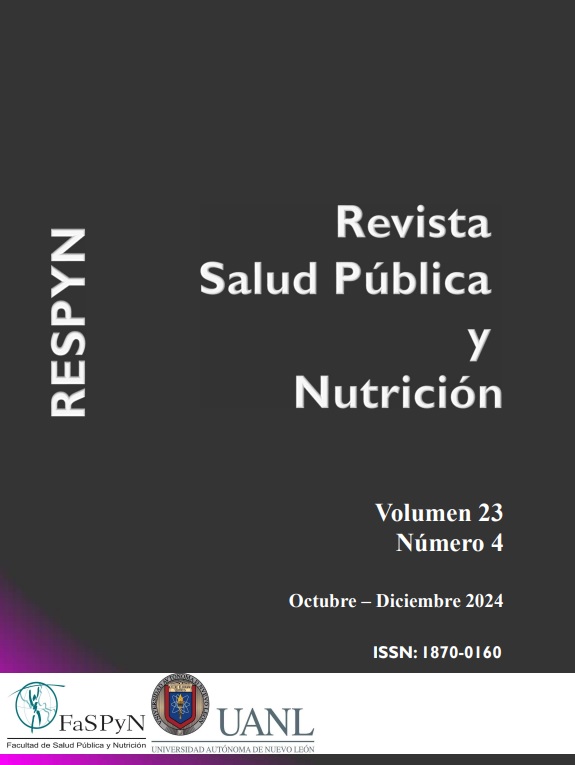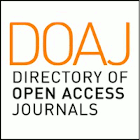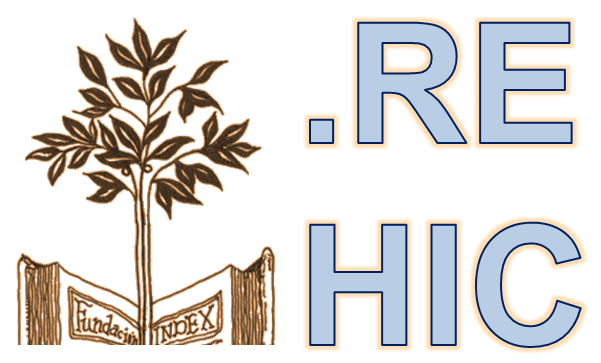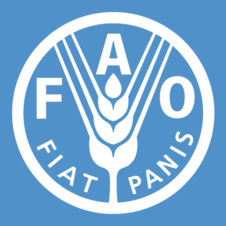Underutilized Mexican crop, runner bean (Phaseolus coccineus): a comprehensive review of nutritional and functional implications
DOI:
https://doi.org/10.29105/respyn23.4-831Palabras clave:
Phaseolus coccineus, nutraceutical properties, incorporating pulses, propiedades nutraceúticas, incorporación de leguminosasResumen
Introducción. El frijol ayocote (Phaseolus coccineus L.), también conocido como frijol escarlata o corredor, es una de las cinco especies de Phaseolus domesticadas en Mesoamérica. Es de importancia económica, ocupando el tercer lugar después de P. vulgaris y P. lunatus. A pesar de su relevancia, la investigación sobre sus compuestos bioactivos y beneficios para la salud es limitada. Objetivo: Esta revisión explora la composición nutricional, los factores antinutricionales y los compuestos bioactivos de P. coccineus, con énfasis en sus implicaciones para la salud. Metodología: Se realizó una revisión exhaustiva siguiendo las directrices PRISMA 2020, identificando 163 estudios en bases de datos electrónicas, de los cuales 13 cumplieron los criterios de inclusión para el análisis. Resultados: Los estudios destacan a P. coccineus como fuente de propiedades nutracéuticas y productos alimentarios innovadores que mejoran la calidad nutricional. Los compuestos bioactivos, como antioxidantes y péptidos, sugieren beneficios para la prevención de enfermedades crónicas y la seguridad alimentaria. Conclusiones: Sin embargo, se requiere más investigación para comprender plenamente la composición de compuestos fenólicos, péptidos bioactivos y factores antinutricionales en P. coccineus, promoviendo su uso como alimento funcional y novedoso ingrediente dietético.
Descargas
Citas
Alcázar-Valle, M., García-Morales, S., Mojica, L., Morales-Hernández, N., Sánchez-Osorio, E., Flores-López, L., Enríquez-Vara, J. N., & Lugo-Cervantes, E. (2021). Nutritional, Antinutritional Compounds and Nutraceutical Significance of Native Bean Species (Phaseolus spp.) of Mexican Cultivars. Agriculture, 11(11), 1031. https://doi.org/10.3390/agriculture11111031 DOI: https://doi.org/10.3390/agriculture11111031
Alcázar-Valle, M., Lugo-Cervantes, E., Mojica, L., Morales-Hernández, N., Reyes-Ramírez, H., Enríquez-Vara, J. N., & García-Morales, S. (2020). Bioactive Compounds, Antioxidant Activity, and Antinutritional Content of Legumes: A Comparison between Four Phaseolus Species. Molecules, 25(15), 3528. https://doi.org/10.3390/molecules25153528 DOI: https://doi.org/10.3390/molecules25153528
Alvarado-López, A. N., Gómez-Oliván, L. M., Heredia, J. B., Baeza-Jiménez, R., Garcia-Galindo, H. S., & Lopez-Martinez, L. X. (2019). Nutritional and bioactive characteristics of Ayocote bean (Phaseolus coccienus L.): An underutilized legume harvested in Mexico. CyTA - Journal of Food, 17(1), Art. 1. https://doi.org/10.1080/19476337.2019.1571530 DOI: https://doi.org/10.1080/19476337.2019.1571530
Ansari, P., Samia, J. F., Khan, J. T., Rafi, M. R., Rahman, Md. S., Rahman, A. B., Abdel-Wahab, Y. H. A., & Seidel, V. (2023). Protective Effects of Medicinal Plant-Based Foods against Diabetes: A Review on Pharmacology, Phytochemistry, and Molecular Mechanisms. Nutrients, 15(14), 3266. https://doi.org/10.3390/nu15143266 DOI: https://doi.org/10.3390/nu15143266
Aquino-Bolaños, E. N., Garzón-García, A. K., Alba-Jiménez, J. E., Chávez-Servia, J. L., Vera-Guzmán, A. M., Carrillo-Rodríguez, J. C., & Santos-Basurto, M. A. (2021). Physicochemical Characterization and Functional Potential of Phaseolus vulgaris L. and Phaseolus coccineus L. Landrace Green Beans. Agronomy, 11(4), 803. https://doi.org/10.3390/agronomy11040803 DOI: https://doi.org/10.3390/agronomy11040803
Bosmali, I., Kotsiou, K., Matsakidou, A., Irakli, M., Madesis, P., & Biliaderis, C. G. (2025). Fortification of wheat bread with an alternative source of bean proteins using raw and roasted Phaseolus coccineus flours: Impact on physicochemical, nutritional and quality attributes. Food Hydrocolloids, 158, 110527. https://doi.org/10.1016/j.foodhyd.2024.110527 DOI: https://doi.org/10.1016/j.foodhyd.2024.110527
Boye, J., Zare, F., & Pletch, A. (2010). Pulse proteins: Processing, characterization, functional properties and applications in food and feed. Food Research International, 43(2), 414-431. https://doi.org/10.1016/j.foodres.2009.09.003 DOI: https://doi.org/10.1016/j.foodres.2009.09.003
Capistrán-Carabarin, A., Aquino-Bolaños, E. N., García-Díaz, Y. D., Chávez-Servia, J. L., Vera-Guzmán, A. M., & Carrillo-Rodríguez, J. C. (2019). Complementarity in Phenolic Compounds and the Antioxidant Activities of Phaseolus coccineus L. and P. vulgaris L. Landraces. Foods, 8(8), 295. https://doi.org/10.3390/foods8080295 DOI: https://doi.org/10.3390/foods8080295
Chávez-Mendoza, C., & Sánchez, E. (2017). Bioactive Compounds from Mexican Varieties of the Common Bean (Phaseolus vulgaris): Implications for Health. Molecules, 22(8), 1360. https://doi.org/10.3390/molecules22081360 DOI: https://doi.org/10.3390/molecules22081360
Chávez-Santoscoy, R. A., Gutiérrez-Uribe, J. A., & Serna-Saldívar, S. O. (2013). Effect of Flavonoids and Saponins Extracted from Black Bean (Phaseolus vulgaris L.) Seed Coats as Cholesterol Micelle Disruptors. Plant Foods for Human Nutrition, 68(4), 416-423. https://doi.org/10.1007/s11130-013-0384-7 DOI: https://doi.org/10.1007/s11130-013-0384-7
Chen, J., Liu, B., Ji, N., Zhou, J., Bian, H., Li, C., Chen, F., & Bao, J. (2009). A novel sialic acid-specific lectin from Phaseolus coccineus seeds with potent antineoplastic and antifungal activities. Phytomedicine, 16(4), 352-360. https://doi.org/10.1016/j.phymed.2008.07.003 DOI: https://doi.org/10.1016/j.phymed.2008.07.003
Corzo-Ríos, L. J., Sánchez-Chino, X. M., Cardador-Martínez, A., Martínez-Herrera, J., & Jiménez-Martínez, C. (2020). Effect of cooking on nutritional and non-nutritional compounds in two species of Phaseolus (P. vulgaris and P. coccineus) cultivated in Mexico. International Journal of Gastronomy and Food Science, 20, 100206. https://doi.org/10.1016/j.ijgfs.2020.100206 DOI: https://doi.org/10.1016/j.ijgfs.2020.100206
Du, F., Zhu, M., Wang, H., & Ng, T. (2013). Purification and characterization of an a-galactosidase from Phaseolus coccineus seeds showing degrading capability on raffinose family oligosaccharides. Plant Physiology and Biochemistry, 5. DOI: https://doi.org/10.1016/j.plaphy.2013.04.017
Espinosa-Ramírez, J., Mariscal-Moreno, R. M., Chuck-Hernández, C., Serna-Saldivar, S. O., & Espiricueta-Candelaria, R. S. (2022). Effects of the substitution of wheat flour with raw or germinated ayocote bean (Phaseolus coccineus) flour on the nutritional properties and quality of bread. Journal of Food Science, 87(9), 3766-3780. https://doi.org/10.1111/1750-3841.16263 DOI: https://doi.org/10.1111/1750-3841.16263
FAOSTAT. (2020). FAO Statistical Yearbook. Food and Agriculture Organization of the United Nations. https://www.fao.org/faostat/es/#data/QCL
Feria, M., Pérez-Santiago, A., Cuevas, D., Martínez, M., & Córdoba, F. (1996). Purification and partial characterization of a new anti-A1 lectin of Phaseolus coccineus collected in Oaxaca, Mexico. Preparative Biochemistry & Biotechnology, 26(1), 31-46. https://doi.org/10.1080/10826069608000048 DOI: https://doi.org/10.1080/10826069608000048
Göksel Saraç, M., Dedebaş, T., Hastaoğlu, E., & Arslan, E. (2022). Influence of using scarlet runner bean flour on the production and physicochemical, textural, and sensorial properties of vegan cakes: WASPAS-SWARA techniques. International Journal of Gastronomy and Food Science, 27, 100489. https://doi.org/10.1016/j.ijgfs.2022.100489 DOI: https://doi.org/10.1016/j.ijgfs.2022.100489
González-Cruz, L., Valadez-Vega, C., Juárez-Goiz, J. M. S., Flores-Martínez, N. L., Montañez-Soto, J. L., & Bernardino-Nicanor, A. (2022). Partial Purification and Characterization of the Lectins of Two Varieties of Phaseolus coccineus (Ayocote Bean). Agronomy, 12(3), 716. https://doi.org/10.3390/agronomy12030716 DOI: https://doi.org/10.3390/agronomy12030716
Hasanaklou, H. T., Pipan, B., Meglič, V., Nagl, N., & Sinkovič, L. (2024). Trypsin inhibitors in seeds and pods of Phaseolus vulgaris/coccineus: A comparative study of shaking and ultrasonic extraction methods. Electronic Journal of Biotechnology, 71, 47-56. https://doi.org/10.1016/j.ejbt.2024.05.003 DOI: https://doi.org/10.1016/j.ejbt.2024.05.003
Hernández-Delgado, S., Muruaga-Martínez, J. S., Vargas-Vázquez, M. L. P., Martínez-Mondragón, J., Chávez-Servia, J. L., Gill-Langarica, H. R., Mayek-Pérez, N., Hernández-Delgado, S., Muruaga-Martínez, J. S., Vargas-Vázquez, M. L. P., Martínez-Mondragón, J., Chávez-Servia, J. L., Gill-Langarica, H. R., & Mayek-Pérez, N. (2015). Advances in Genetic Diversity Analysis of Phaseolus in Mexico. En Molecular Approaches to Genetic Diversity. IntechOpen. https://doi.org/10.5772/60029 DOI: https://doi.org/10.5772/60029
Jaiswal, A. (2020). Nutritional Composition and Antioxidant Properties of Fruits and Vegetables—1st Edition. https://www.elsevier.com/books/nutritional-composition-and-antioxidant-properties-of-fruits-and-vegetables/jaiswal/978-0-12-812780-3
Kalloo, G. (1993). Runner bean: Phaseolus coccineus L. En G. Kalloo & B. O. Bergh (Eds.), Genetic Improvement of Vegetable Crops (pp. 405-407). Pergamon. https://doi.org/10.1016/B978-0-08-040826-2.50032-1 DOI: https://doi.org/10.1016/B978-0-08-040826-2.50032-1
King, J., Leong, S. Y., Alpos, M., Johnson, C., McLeod, S., Peng, M., Sutton, K., & Oey, I. (2024). Role of food processing and incorporating legumes in food products to increase protein intake and enhance satiety. Trends in Food Science & Technology, 104466. https://doi.org/10.1016/j.tifs.2024.104466 DOI: https://doi.org/10.1016/j.tifs.2024.104466
Kumar, Y., Basu, S., Goswami, D., Devi, M., Shivhare, U. S., & Vishwakarma, R. K. (2022). Anti‐nutritional compounds in pulses: Implications and alleviation methods. Legume Science, 4(2), e111. https://doi.org/10.1002/leg3.111 DOI: https://doi.org/10.1002/leg3.111
Lacaille-Dubois, M.-A., & Melzig, M. (2016). Saponins: Current Progress and Perspectives. Planta Medica, 82(18), 1495-1495. https://doi.org/10.1055/s-0042-119776 DOI: https://doi.org/10.1055/s-0042-119776
Li, S., Bu, T., Zheng, J., Liu, L., He, G., & Wu, J. (2019). Preparation, Bioavailability, and Mechanism of Emerging Activities of Ile‐Pro‐Pro and Val‐Pro‐Pro. Comprehensive Reviews in Food Science and Food Safety, 18(4), 1097-1110. https://doi.org/10.1111/1541-4337.12457 DOI: https://doi.org/10.1111/1541-4337.12457
Luna-Vital, D. A., Mojica, L., González de Mejía, E., Mendoza, S., & Loarca-Piña, G. (2015). Biological potential of protein hydrolysates and peptides from common bean (Phaseolus vulgaris L.): A review. Food Research International, 76, 39-50. https://doi.org/10.1016/j.foodres.2014.11.024 DOI: https://doi.org/10.1016/j.foodres.2014.11.024
Marinangeli, C. P. F., & Jones, P. J. H. (2011). Whole and fractionated yellow pea flours reduce fasting insulin and insulin resistance in hypercholesterolaemic and overweight human subjects. British Journal of Nutrition, 105(1), 110-117. https://doi.org/10.1017/S0007114510003156 DOI: https://doi.org/10.1017/S0007114510003156
Mariscal-Moreno, R. M., Chuck-Hernández, C., Figueroa-Cárdenas, J. de D., & Serna-Saldivar, S. O. (2021). Physicochemical and Nutritional Evaluation of Bread Incorporated with Ayocote Bean (Phaseolus coccineus) and Black Bean (Phaseolus vulgaris). Processes, 9(10), Art. 10. https://doi.org/10.3390/pr9101782 DOI: https://doi.org/10.3390/pr9101782
Mojica, L., Gonzalez de Mejia, E., Granados-Silvestre, M. Á., & Menjivar, M. (2017). Evaluation of the hypoglycemic potential of a black bean hydrolyzed protein isolate and its pure peptides using in silico, in vitro and in vivo approaches. Journal of Functional Foods, 31, 274-286. https://doi.org/10.1016/j.jff.2017.02.006 DOI: https://doi.org/10.1016/j.jff.2017.02.006
Mullins, A. P., & Arjmandi, B. H. (2021). Health Benefits of Plant-Based Nutrition: Focus on Beans in Cardiometabolic Diseases. Nutrients, 13(2), 519. https://doi.org/10.3390/nu13020519 DOI: https://doi.org/10.3390/nu13020519
Ngai, P. H. K., & Ng, T. B. (2005). Phaseococcin, an antifungal protein with antiproliferative and anti-HIV-1 reverse transcriptase activities from small scarlet runner beans. Biochemistry and Cell Biology, 83(2), 212-220. https://doi.org/10.1139/o05-037 DOI: https://doi.org/10.1139/o05-037
Njoumi, S., Josephe Amiot, M., Rochette, I., Bellagha, S., & Mouquet-Rivier, C. (2019). Soaking and cooking modify the alpha-galacto-oligosaccharide and dietary fibre content in five Mediterranean legumes. International Journal of Food Sciences and Nutrition, 70(5), 551-561. https://doi.org/10.1080/09637486.2018.1544229 DOI: https://doi.org/10.1080/09637486.2018.1544229
Nowaková, N., & Kocourek, J. (1974). Studies on phytohemagglutinins: XX. Isolation and characterization of hemagglutinins from scarlet runner seeds (Phaseolus coccineus L.). Biochimica et Biophysica Acta (BBA) - Protein Structure, 359(2), 320-333. https://doi.org/10.1016/0005-2795(74)90231-1 DOI: https://doi.org/10.1016/0005-2795(74)90231-1
Ochoa, J.-L., & Kristiansen, T. (1978). Stroma: As an affinity adsorbent for non-inhibitable lectins. FEBS Letters, 90(1), 145-148. https://doi.org/10.1016/0014-5793(78)80317-2 DOI: https://doi.org/10.1016/0014-5793(78)80317-2
Orak, H., Karamać, M., Orak, A., & Amarowicz, R. (2016). Antioxidant Potential and Phenolic Compounds of Some Widely Consumed Turkish White Bean (Phaseolus vulgaris L.) Varieties. Polish Journal of Food and Nutrition Sciences, 66(4), 253-260. https://doi.org/10.1515/pjfns-2016-0022 DOI: https://doi.org/10.1515/pjfns-2016-0022
Page, M. J., McKenzie, J. E., Bossuyt, P. M., Boutron, I., Hoffmann, T. C., Mulrow, C. D., Shamseer, L., Tetzlaff, J. M., Akl, E. A., Brennan, S. E., Chou, R., Glanville, J., Grimshaw, J. M., Hróbjartsson, A., Lalu, M. M., Li, T., Loder, E. W., Mayo-Wilson, E., McDonald, S., … Moher, D. (2021). The PRISMA 2020 statement: An updated guideline for reporting systematic reviews. BMJ, 372, n71. https://doi.org/10.1136/bmj.n71 DOI: https://doi.org/10.1136/bmj.n71
Pan, W. L., & Ng, T. B. (2015). A dimeric Phaseolus coccineus lectin with anti-oxidative, anti-proliferative and cytokine-inducing activities. International Journal of Biological Macromolecules, 81, 960-966. https://doi.org/10.1016/j.ijbiomac.2015.09.034 DOI: https://doi.org/10.1016/j.ijbiomac.2015.09.034
Patterson, C. A., Curran, J., & Der, T. (2017). Effect of Processing on Antinutrient Compounds in Pulses. Cereal Chemistry, 94(1), 2-10. https://doi.org/10.1094/CCHEM-05-16-0144-FI DOI: https://doi.org/10.1094/CCHEM-05-16-0144-FI
Pedrali, D., Proserpio, C., Borgonovi, S. M., Zuccolo, M., Leoni, V., Borgonovo, G., Bernardi, A. M., Scarafoni, A., Pagliarini, E., Giorgi, A., & Giupponi, L. (2022). Nutritional Characterization and Novel Use of “Copafam” Bean (Phaseolus coccineus L.) for the Sustainable Development of Mountains Areas. Sustainability, 14(20), 13409. https://doi.org/10.3390/su142013409 DOI: https://doi.org/10.3390/su142013409
Peighambardoust, S. H., Karami, Z., Pateiro, M., & Lorenzo, J. M. (2021). A Review on Health-Promoting, Biological, and Functional Aspects of Bioactive Peptides in Food Applications. Biomolecules, 11(5), 631. https://doi.org/10.3390/biom11050631 DOI: https://doi.org/10.3390/biom11050631
Proserpio, C., Bresciani, A., Marti, A., & Pagliarini, E. (2020). Legume Flour or Bran: Sustainable, Fiber-Rich Ingredients for Extruded Snacks? Foods, 9(11), 1680. https://doi.org/10.3390/foods9111680 DOI: https://doi.org/10.3390/foods9111680
Rațu, R. N., Veleșcu, I. D., Stoica, F., Usturoi, A., Arsenoaia, V. N., Crivei, I. C., Postolache, A. N., Lipșa, F. D., Filipov, F., Florea, A. M., Chițea, M. A., & Brumă, I. S. (2023). Application of Agri-Food By-Products in the Food Industry. Agriculture, 13(8), Art. 8. https://doi.org/10.3390/agriculture13081559 DOI: https://doi.org/10.3390/agriculture13081559
Rodriguez, M., Rau, D., Angioi, S. A., Bellucci, E., Bitocchi, E., Nanni, L., Knüpffer, H., Negri, V., Papa, R., & Attene, G. (2013). European Phaseolus coccineus L. landraces: Population Structure and Adaptation, as Revealed by cpSSRs and Phenotypic Analyses. PLoS ONE, 8(2), e57337. https://doi.org/10.1371/journal.pone.0057337 DOI: https://doi.org/10.1371/journal.pone.0057337
Romero-Arenas, O., Damián Huato, M. A., Rivera Tapia, J. A., Báez Simón, A., Huerta Lara, M., & Cabrera Huerta, E. (2013). The Nutritional value of Beans (Phaseolus vulgaris L.) and its importance for Feeding of Rural communities in Puebla-Mexico. Vol. 2(8), 59-65.
Saint-Eve, A., Granda, P., Legay, G., Cuvelier, G., & Delarue, J. (2019). Consumer acceptance and sensory drivers of liking for high plant protein snacks. Journal of the Science of Food and Agriculture, 99(8), 3983-3991. https://doi.org/10.1002/jsfa.9624 DOI: https://doi.org/10.1002/jsfa.9624
Salim, R., Nehvi, I. B., Mir, R. A., Tyagi, A., Ali, S., & Bhat, O. M. (2023). A review on anti-nutritional factors: Unraveling the natural gateways to human health. Frontiers in Nutrition, 10, 1215873. https://doi.org/10.3389/fnut.2023.1215873 DOI: https://doi.org/10.3389/fnut.2023.1215873
Sánchez-Arteaga, H. M., Urías-Silvas, J. E., Espinosa-Andrews, H., & García-Márquez, E. (2015). Effect of chemical composition and thermal properties on the cooking quality of common beans (Phaseolus vulgaris). CyTA - Journal of Food, 13(3), 385-391. https://doi.org/10.1080/19476337.2014.988182 DOI: https://doi.org/10.1080/19476337.2014.988182
Sánchez-Villa, C. E., Zepeda-Bautista, R., Ramírez-Ortiz, M. E., & Corzo-Ríos, L. J. (2020). Nixtamalized tortillas supplemented with proteins isolated from Phaseolus coccineus and huauzontle (Chenopodium berlandieri subsp. Nuttalliae) flour: Rheological, textural, and sensorial properties. International Journal of Gastronomy and Food Science, 22, 100274. https://doi.org/10.1016/j.ijgfs.2020.100274 DOI: https://doi.org/10.1016/j.ijgfs.2020.100274
Schmidt, H. de O., & Oliveira, V. R. de. (2023). Overview of the Incorporation of Legumes into New Food Options: An Approach on Versatility, Nutritional, Technological, and Sensory Quality. Foods (Basel, Switzerland), 12(13), 2586. https://doi.org/10.3390/foods12132586 DOI: https://doi.org/10.3390/foods12132586
Shevkani, K., Singh, N., Chen, Y., Kaur, A., & Yu, L. (2019). Pulse proteins: Secondary structure, functionality and applications. Journal of Food Science and Technology, 56(6), 2787-2798. https://doi.org/10.1007/s13197-019-03723-8 DOI: https://doi.org/10.1007/s13197-019-03723-8
ShuMei, L., LiRong, W., MengXuan, S., & XianLiang, S. (2019). Effect of food additives on antioxidant activity of flavonoids from Phaseolus coccineus. China Condiment, 44(5), 9-16.
Singh, B., Singh, J. P., Shevkani, K., Singh, N., & Kaur, A. (2017). Bioactive constituents in pulses and their health benefits. Journal of Food Science and Technology, 54(4), 858-870. https://doi.org/10.1007/s13197-016-2391-9 DOI: https://doi.org/10.1007/s13197-016-2391-9
Singh, N. (2017). Pulses: An overview. Journal of Food Science and Technology, 54(4), 853-857. https://doi.org/10.1007/s13197-017-2537-4 DOI: https://doi.org/10.1007/s13197-017-2537-4
Sinkovič, L., Pipan, B., Sinkovič, E., & Meglič, V. (2019). Morphological Seed Characterization of Common ( Phaseolus vulgaris L.) and Runner (Phaseolus coccineus L.) Bean Germplasm: A Slovenian Gene Bank Example. BioMed Research International, 2019, 1-13. https://doi.org/10.1155/2019/6376948 DOI: https://doi.org/10.1155/2019/6376948
Teniente-Martínez, G., Bernardino-Nicanor, A., Cariño-Cortés, R., Valadez-Vega, M. del C., Montañez-Soto, J. L., Acosta-García, G., & González-Cruz, L. (2019). Cytotoxic and genotoxic activity of protein isolate of ayocote beans and anticancer activity of their protein fractions. Journal of Food Measurement and Characterization, 13(2), 1040-1048. https://doi.org/10.1007/s11694-018-0019-7 DOI: https://doi.org/10.1007/s11694-018-0019-7
Teniente-Martínez, G., Bernardino-Nicanor, A., Valadez-Vega, M. D. C., Montañez-Soto, J. L., Juárez-Goiz, J. M. S., & González-Cruz, L. (2022). In vitro study of the antihypertensive, antioxidant and antiproliferative activities of peptides obtained from two varieties of Phaseolus coccineus L. CyTA - Journal of Food, 20(1), 102-110. https://doi.org/10.1080/19476337.2022.2090611 DOI: https://doi.org/10.1080/19476337.2022.2090611
Thakur, A., Sharma, V., & Thakur, A. (2019). An overview of anti-nutritional factors in food. International Journal of Chemical Studies, 7(1), 2472-2479.
Venkatachalam, K., & Nagarajan, M. (2017). Physicochemical and sensory properties of savory crackers incorporating green gram flour to partially or wholly replace wheat flour. Italian Journal of Food Science, 29(4). https://doi.org/10.14674/1120-1770-IJFS808
Yeshi, K., Crayn, D., Ritmejerytė, E., & Wangchuk, P. (2022). Plant Secondary Metabolites Produced in Response to Abiotic Stresses Has Potential Application in Pharmaceutical Product Development. Molecules, 27(1), 313. https://doi.org/10.3390/molecules27010313 DOI: https://doi.org/10.3390/molecules27010313
Zhao, Q., Luan, X., Zheng, M., Tian, X.-H., Zhao, J., Zhang, W.-D., & Ma, B.-L. (2020). Synergistic Mechanisms of Constituents in Herbal Extracts during Intestinal Absorption: Focus on Natural Occurring Nanoparticles. Pharmaceutics, 12(2), 128. https://doi.org/10.3390/pharmaceutics12020128 DOI: https://doi.org/10.3390/pharmaceutics12020128
Descargas
Publicado
Cómo citar
Número
Sección
Licencia
Derechos de autor 2024 Victor Andres Ayala Rodriguez, Jesús Alberto Vázquez Rodríguez, Vania Urías Orona, David Neder Suárez, Erick Heredia Olea , Carlos Abel Amaya Guerra

Esta obra está bajo una licencia internacional Creative Commons Atribución 4.0.
Los derechos del trabajo pertenecen al autor o autores, sin embargo, al enviarlo a publicación en la Revista Salud Pública y Nutrición de la Facultad de Salud Pública y Nutrición de la Universidad Autónoma de Nuevo León, le otorgan el derecho para su primera publicación en medio electrónico, y posiblemente, en medio impreso a la Revista Salud Pública y Nutrición. La licencia que se utiliza es la de atribución de Creative Commons , que permite a terceros utilizar lo publicado siempre que se mencione la autoría del trabajo y a la primera publicación que es en la Revista Salud Pública y Nutrición. Asimismo, el o los autores tendrán en cuenta que no estará permitido enviar la publicación a ninguna otra revista, sin importar el formato. Los autores estarán en posibilidad de realizar otros acuerdos contractuales independientes y adicionales para la distribución no exclusiva de la versión del artículo publicado en la Revista Salud Pública y Nutrición (p. ej., repositorio institucional o publicación en un libro) siempre que indiquen claramente que el trabajo se publicó por primera vez en la Revista Salud Pública, Revista de la Facultad de Salud Pública y Nutrición de la Universidad Autónoma de Nuevo León.














